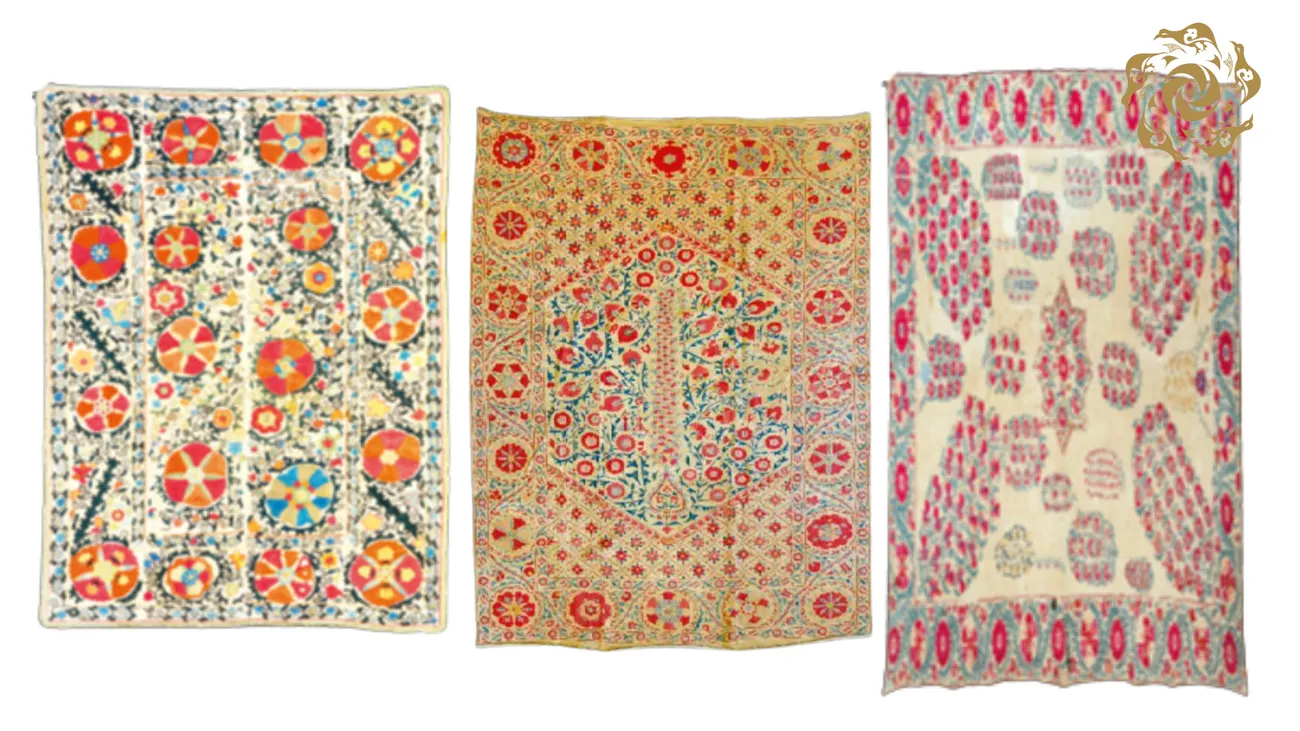Traditional Uzbek embroidered textiles, known as suzani, have become a symbol of the refinement and craftsmanship of Bukhara's folk art. The name suzani derives from the word "sūz" (needle), emphasizing that each piece was created by hand, with great love and meticulous care.
Today, rare examples of Bukhara suzani from the 18th–19th centuries can be found in Italian museums. These masterpieces impress with the richness of their ornamentation: circles, floral compositions, mythological trees, symbols of the sun, and motifs of eternal life. Each design carried profound meaning — serving as talismans, bringing happiness to the home, and accompanying life's major events: weddings, the birth of children, and festive celebrations.

The art of suzani-making was passed down from generation to generation within Uzbek families. Craftswomen used natural dyes, silk, and cotton threads to create vibrant, lively textiles, where every stitch conveyed a part of the artist’s soul.
The appearance of Uzbek suzani in Italian collections is linked to the 19th-century European fascination with Oriental textiles. European collectors admired not only the artistic quality of the works but also the rich cultural code they embodied. Today, Bukhara suzani are considered true gems of the world’s decorative and applied arts.
The material is based on the book “Cultural Legacy of Uzbekistan in the Collections of Italy” (Volume 32, series “Cultural Legacy of Uzbekistan in the World Collections”). The book was published within the framework of the international project World Society for the Study, Preservation, and Popularization of the Cultural Legacy of Uzbekistan (WOSCU). The book is available in ibrary, and on the official website of the project: www.woscu.org.
WOSCU Press Service
